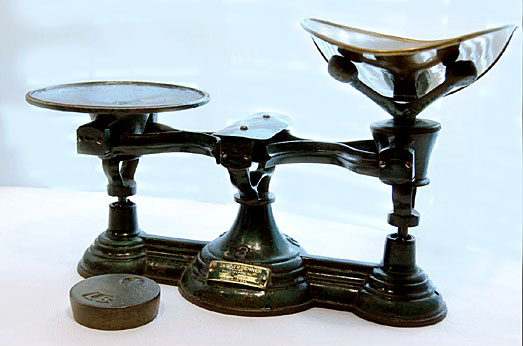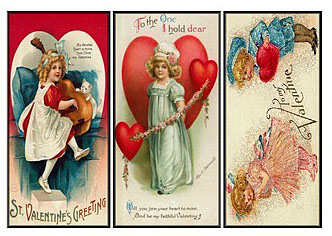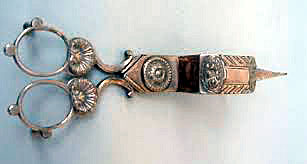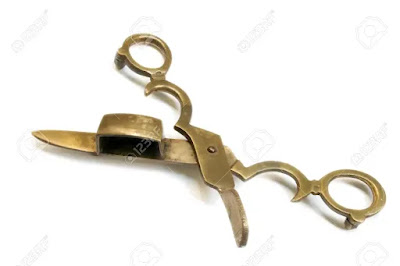QUESTION: I have a Gem Roller Organ that has been in my family for some time. It spent the last few years in the attic. The bellows seem to be working and the keys respond to the pins, but it has stopped playing. What can you tell me about it? Also, can it be repaired?
ANSWER: You’ve got one of the original Gem Roller Organs produced by the Autophone Company of Ithaca, New York. Since it’s intact and in relatively good condition, it most likely needs cleaning, which you should have done by a professional who works on music boxes and gramophones.
In 1884, the Autophone Company developed a hand-cranked roller reed organ which operated by forcing air out through reeds under pressure with exposed bellows. The musical notes were traditionally represented by wire bridges or staples, which were formed by hand according to the length of each note and inserted at the correct location around the circumference of the barrel. As the barrel was turned, the projections operated a valve mechanism to admit air into the musical pipes or reeds.
The company named its most common and least expensive one, a vacuum-operated model, “The Gem Roller Organ.” It was basically a 20-note suction-operated reed organ in a light wooden table-top case measuring 14.5 inches wide, 12 inches deep, and 8 inches high, and weighing 6.5 pounds.
The roller consisted of a solid wood cylinder measuring a little over 6 inches long and nearly 2 inches in diameter. It had a mounting hole with a metal bushing at each end, and an offset drive hole at the left-hand end. Tiny pins, standing .05 inches above the surface of the roller, resulted in 110 pins per revolution.
The roller made three complete turns per tune, with the pins arranged on a spiral path of .10 inch pitch. The physical length of each tune equaled 16.5 inches or 330 pins, creating a playing time of about 40 seconds, giving an effective "roll speed" of only 2 feet per minute and a time resolution of 8 pins per second. The mechanical alignment needed to be precise at this speed, as timing errors from bent pins or pallets were very noticeable.
 The company produced over 1,000 different rollers, containing a broad selection of religious, military, operatic, and music-hall tunes that were popular from the 1880s through the 1890s.
The company produced over 1,000 different rollers, containing a broad selection of religious, military, operatic, and music-hall tunes that were popular from the 1880s through the 1890s.
Autophone mounted the roller, drive mechanism, and pallet valves on cast-iron brackets on the top front section of the case. Workers mounted the brass reeds on the inside of the sloping panel, directly behind the pallets. They mounted the pumping bellows or feeders in the lower section of the case, with the reservoir at the top rear. Black rubberized “bellows cloth” covered the rear section of the reservoir which moved up and down as the instrument plays
 The roller organ had an ingenious drive mechanism that was both simple and effective. Two short horizontal shafts held the roller between them and an arm drove it at its left-hand end. The springs on the support shafts pushed the roller towards the left, allowing it to travel .30 of an inch to the right as the tune progressed
The roller organ had an ingenious drive mechanism that was both simple and effective. Two short horizontal shafts held the roller between them and an arm drove it at its left-hand end. The springs on the support shafts pushed the roller towards the left, allowing it to travel .30 of an inch to the right as the tune progressed
 After two more turns, the flattened pin attached to the roller shaft reached the tab on the forked arm, just as the tune came to its end. With another turn of the crank, the pin pressed downwards on the arm, which in turn pushed the roller frame forward clearing the keys. The forked arm then pulls the roller frame rearward and engages the driving worm, ready to start again. Multiple verses of a song or hymn can be played continuously just by continuing to crank.
After two more turns, the flattened pin attached to the roller shaft reached the tab on the forked arm, just as the tune came to its end. With another turn of the crank, the pin pressed downwards on the arm, which in turn pushed the roller frame forward clearing the keys. The forked arm then pulls the roller frame rearward and engages the driving worm, ready to start again. Multiple verses of a song or hymn can be played continuously just by continuing to crank.
 The lower ends of the keys were bent upwards to engage with the pins on the rollers. The pins pushed the keys about .040 of an inch, amplified by the lever arms into a movement at the pallets. The keys oscillated slightly as a succession of pins passed, giving a tremolo effect to the longer notes.
The lower ends of the keys were bent upwards to engage with the pins on the rollers. The pins pushed the keys about .040 of an inch, amplified by the lever arms into a movement at the pallets. The keys oscillated slightly as a succession of pins passed, giving a tremolo effect to the longer notes.
A set of 20 brass reeds, mounted in a wooden block attached to the inside face of the sloping front panel, immediately behind the pallet valves, produced the music. Air entered through the slots in the front face when the pallets were lifted, passing through the reeds into the reservoir, and out through the feeder bellows underneath.
The reed block, machined from a solid block of wood, measured 1.75 inches high by 7 inches long. The roller organ had no soundboard. The sound radiated directly from the reeds and through the pallet openings. The music box had no way to control the volume.
The roller organ’s design placed the lower notes in the upper section of the block, so that the greater leverage of the longer keys would give a greater opening distance and a less-restricted air flow.
The Gem Roller Organ used conventional American organ reeds which had flat tongues and produced a strong sound. These produced a musical scale of 20 selected notes over 3 octaves. All instruments using the same-size rollers used the same scale, but the actual key and pitch often varied.
 Because of its relative simplicity, the company was able to keep the cost of its roller organ affordable. Sears & Roebuck, in their 1902 Catalog, offered the Gem Roller Organ for as low as $3.25, including three rollers. Contracting with Autophone to produce large quantities of these devices enabled Sears to sell in volume and keep its price low.
Because of its relative simplicity, the company was able to keep the cost of its roller organ affordable. Sears & Roebuck, in their 1902 Catalog, offered the Gem Roller Organ for as low as $3.25, including three rollers. Contracting with Autophone to produce large quantities of these devices enabled Sears to sell in volume and keep its price low.
The Gem Roller Organ, available in either a painted black or walnut-like finish with gold stenciled applied designs, used teeth or pins embedded into a 20-note wooden roller, similar to the cylinders used in Swiss music boxes. Pins operated on valve keys while a gear turned the roller. The mass-produced 20-note rollers, priced as low as 18 cents each—and according to the Sears Catalog, less than the price of a traditional sheet of music—played a wide range of tunes, from classical to sacred to ethnic and popular tunes. The 1902 Sears Catalog listed 220 different rollers of the over 1,200 different titles then available.
The tone of a roller organ was similar to a cabinet parlor organ of the time. At 16 inches long, 14 inches wide and 9 inches high, the Gem Roller Organ was small and light enough to place on a parlor table.
 Since Autophone usually printed the manufacturing date on the bottom of the case, it’s relatively easy to date the device, itself. All rollers show a copyright date of July 14, 1885, even though the Autophone sold them from the late 1880's through the late 1920's—an amazing lifespan for a single basic design. Their success may be attributed to the full, rich sound and pleasing music arrangements offered on the rollers.
Since Autophone usually printed the manufacturing date on the bottom of the case, it’s relatively easy to date the device, itself. All rollers show a copyright date of July 14, 1885, even though the Autophone sold them from the late 1880's through the late 1920's—an amazing lifespan for a single basic design. Their success may be attributed to the full, rich sound and pleasing music arrangements offered on the rollers.
Unfortunately, roller organs quickly fell out of favor after the introduction of the phonograph around the turn of the 20th century even though they cost much less than disk or cylinder music boxes manufactured during the same period. Considered the common-mans form of entertainment since music boxes and other instruments were much more expensive, roller organs could be found in many middle class homes. Most eventually ended up in the attic, in the barn, or simply thrown away. Today, roller organs sell for anywhere from $350 to over $800, depending on the condition and the number of rollers included. The rollers, themselves, sell for about $20 each.
To read more articles on antiques, please visit the Antiques Articles section of my Web site. And to stay up to the minute on antiques and collectibles, please join the over 30,000 readers by following my free online magazine, #TheAntiquesAlmanac. Learn more about "The Sporting Life" in the 2025 Summer Edition, online now. And to read daily posts about unique objects from the past and their histories, like the #Antiques and More Collection on Facebook.












































